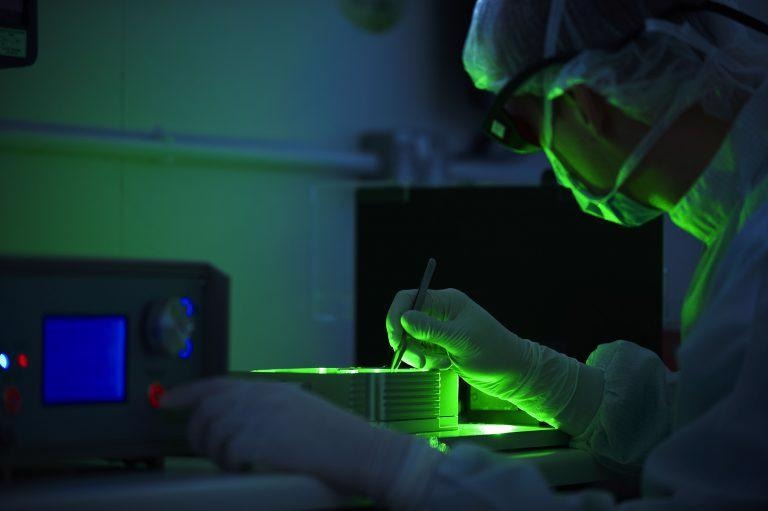Dec 11 2020
Electron microscopy (EM) is an effective imaging method that is reputed for its superior spatial resolution. The theoretical maximum resolving power of traditional microscopy is surpassed by several orders of magnitude using EM. This allows researchers to resolve the chemical composition of samples and probe nanoscale structures with unparalleled precision.
Typical EM systems are normally ineffective for monitoring the differences in macromolecular structures over time. To investigate these differences, time-resolved electron microscopy should be used by researchers.

Image Credit: Laser Quantum Ltd
A Brief Introduction to SEM and TEM
It is important to discuss the main working principles of EM before outlining the principles of time-resolved electron microscopy.
Visible light is used in traditional microscopy for the magnification of surfaces or objects up to a theoretical maximum of 1000x. The wavelengths of visible light restrict this so-called resolving limit.
Light, which can be seen by the human eye has a much longer wavelength compared to electrons. In fact, objects can be magnified up to an unrivaled 200,000x using an electron beam with outstanding degrees of chemical specificity.
Transmission electron microscopy (TEM) and scanning electron microscopy (SEM) are the two main types of EM. While each technique employs the same fundamental apparatus to yield a focused electron beam that is directed onto the object of interest, they differ in how the samples are illuminated.
A TEM utilizes a fluorescent screen to produce a projection image while an SEM employs a range of deflector coils to modify the beam path and raster scan the sample. A continuous wave (CW) electron beam is predominantly used in each of these systems which fails to deliver appropriate temporal information.
Factoring in Time Resolution
While conventional SEM or TEM can be used to investigate a number of important structures and dynamics, it is often essential to analyze systems at more strict timescales. Time-resolved electron microscopy is used when researchers want to connect their spatial data with efficient temporal resolution.
This technique has been created as a direct consequence of comparatively recent developments in laser technology, especially in the field of ultrafast pulsed wave (PW) laser systems. The leading solution in this space is femtosecond laser technology, which offers high repetition rates and ultrashort pulses.
For time-resolved electron microscopy systems, the main principle of operation is based on short electron pulses that irradiate the sample and acquire snapshots quickly at pre-determined intervals, according to the length of these electron beam pulses.
The majority of time-resolved electron microscopy electron beams include pulses that are close to the femtosecond regime, offering detailed information about sample structure, composition and dynamics with both high temporal and spatial resolution.
Time-Resolved Electron Microscopy Solutions
Laser Quantum is an internationally renowned manufacturer of ultrafast laser sources for challenging application areas. Time-resolved electron microscopy solutions are offered by Laser Quantum based on its own range of ultrafast laser systems.

This information has been sourced, reviewed and adapted from materials provided by Laser Quantum Ltd.
For more information on this source, please visit Laser Quantum Ltd.